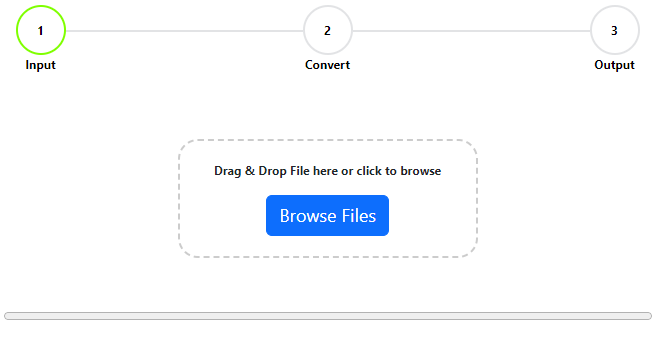Reading a Shapefile using Python
You have several options for reading shapefiles in Python:
- Geopandas: Use
read_file()function to load shapefiles into a GeoDataFrame. - Fiona: Use
fiona.open()function to open a shapefile and iterate over its records. - Shapely: Use
shape()function together with Fiona to create shapely geometries from the shapefile records. - GDAL (osgeo): Use
ogr.Open()function to open a shapefile and access its layers and features.
Each library has its own set of features and level of abstraction, so you can choose the one that best fits your needs. Geopandas is generally the most user-friendly and feature-rich option, while Fiona, Shapely, and GDAL offer more low-level control over the data.
Want to stay ahead of the geospatial curve? Listen to our podcast!
Reading a shapefile with Geopandas
The geopandas library, which is built on top of pandas and fiona. You can use the read_file() function in geopandas to read a shapefile directly into a GeoDataFrame. Here is an example:
import geopandas as gpd
# Read the shapefile
gdf = gpd.read_file("path/to/shapefile.shp")
# Print the first few rows of the GeoDataFrame
print(gdf.head())
Reading a shapefile with Fiona
Another option is to use the fiona library, which is a lower-level library for reading and writing geospatial data. You can use the fiona.open() function to open a shapefile and iterate over the records in the file. Here is an example:
import fiona
# Open the shapefile
with fiona.open("path/to/shapefile.shp") as shapefile:
# Iterate over the records
for record in shapefile:
# Print the record
print(record)
Both geopandas and fiona rely on the shapely library for representing geospatial geometries. You can use shapely to perform operations on the geometries in the shapefile, such as calculating their area or checking for intersections.
Reading a shapefile with Shapely
To read a shapefile using shapely, you can use the fiona library to open the shapefile and iterate over the records, as I mentioned in my previous answer. fiona provides a convenient way to read and write geospatial data, and it is built on top of GDAL, a library for reading and writing raster and vector data.
Here is an example of how you can use fiona and shapely to read a shapefile and print the area of each geometry in the file:
import fiona
from shapely.geometry import shape
# Open the shapefile
with fiona.open("path/to/shapefile.shp") as shapefile:
# Iterate over the records
for record in shapefile:
# Get the geometry from the record
geometry = shape(record['geometry'])
# Print the area of the geometry
print(geometry.area)
You can also use the shape() function from shapely to convert the geometries in the shapefile to shapely geometries, which will allow you to use the various geometry methods and functions provided by shapely.
Keep in mind that this approach will only allow you to access the geometries in the shapefile. If you want to access the other attributes of the records, you will need to use fiona to extract them from the record dictionary.
Reading a shapefile with GDAL
To read a shapefile using GDAL in Python, you will need to install the GDAL library and its Python bindings. Because GDAL is a standard component of most geospatial python libraries you might already have this installed.
Once you have GDAL installed, you can use the ogr module to open a shapefile and read its contents. The ogr module is part of the GDAL library and provides a way to work with vector data in Python.
Here is an example of how you can use the ogr module to read a shapefile and print the attributes of each feature in the file:
from osgeo import ogr
# Open the shapefile
shapefile = ogr.Open("path/to/shapefile.shp")
# Get the layer
layer = shapefile.GetLayer()
# Iterate over the features in the layer
for feature in layer:
# Get the attributes of the feature
attributes = feature.items()
# Print the attributes
print(attributes)
This example opens the shapefile using the ogr.Open() function and gets the layer using the GetLayer() method. It then iterates over the features in the layer and prints the attributes of each feature. The attributes are stored in a dictionary-like object called an ogr.FeatureDefn, which can be accessed using the items() method.
You can also use the ogr module to access the geometry of each feature in the shapefile. The geometry is represented as an ogr.Geometry object, which has methods for accessing and manipulating the geometry.
For example, you can use the GetGeometryRef() method to get the geometry of a feature and the GetPoint() method to access the coordinates of a point in the geometry. Here is an example that prints the coordinates of the first point in each feature:
from osgeo import ogr
# Open the shapefile
shapefile = ogr.Open("path/to/shapefile.shp")
# Get the layer
layer = shapefile.GetLayer()
# Iterate over the features in the layer
for feature in layer:
# Get the geometry of the feature
geometry = feature.GetGeometryRef()
# Check if the geometry is a point
if geometry.GetGeometryType() == ogr.wkbPoint:
# Get the coordinates of the point
x, y = geometry.GetPoint()
# Print the coordinates
print(x, y)
Using the ogr module, you can read, write, and manipulate vector data in Python using the GDAL library.





